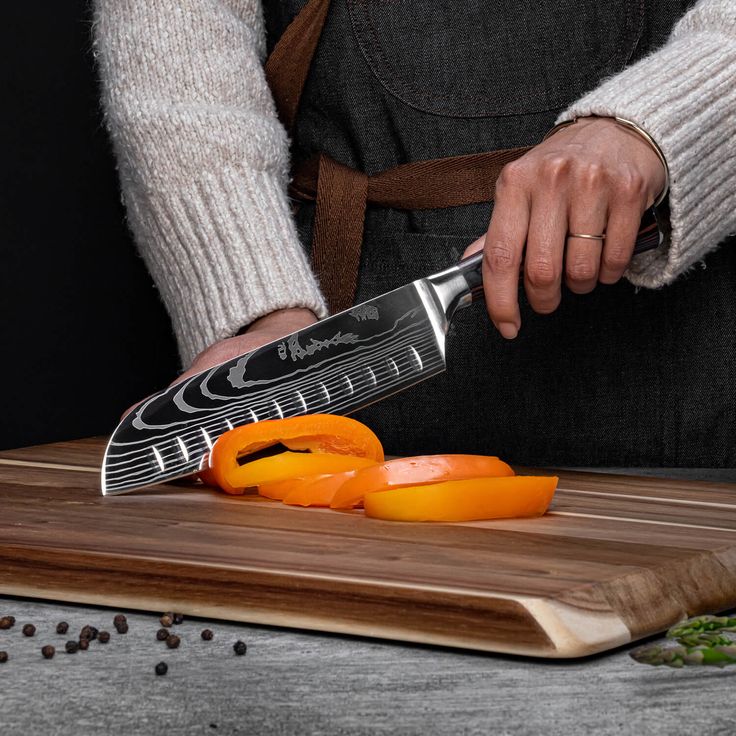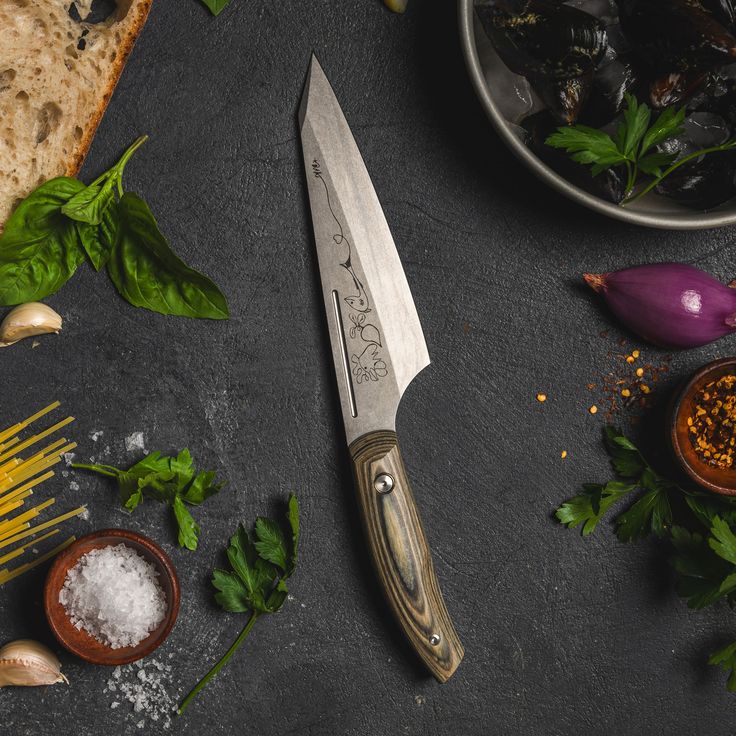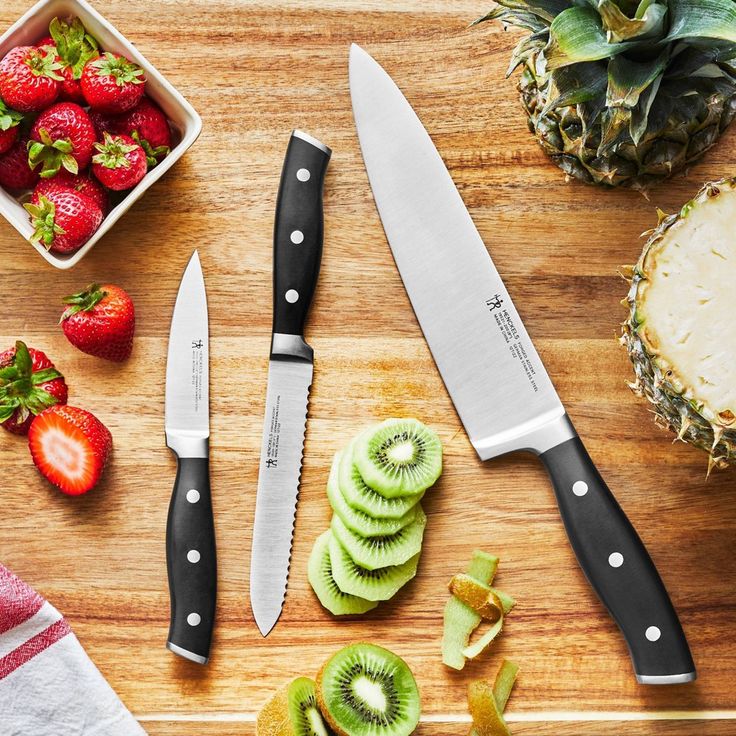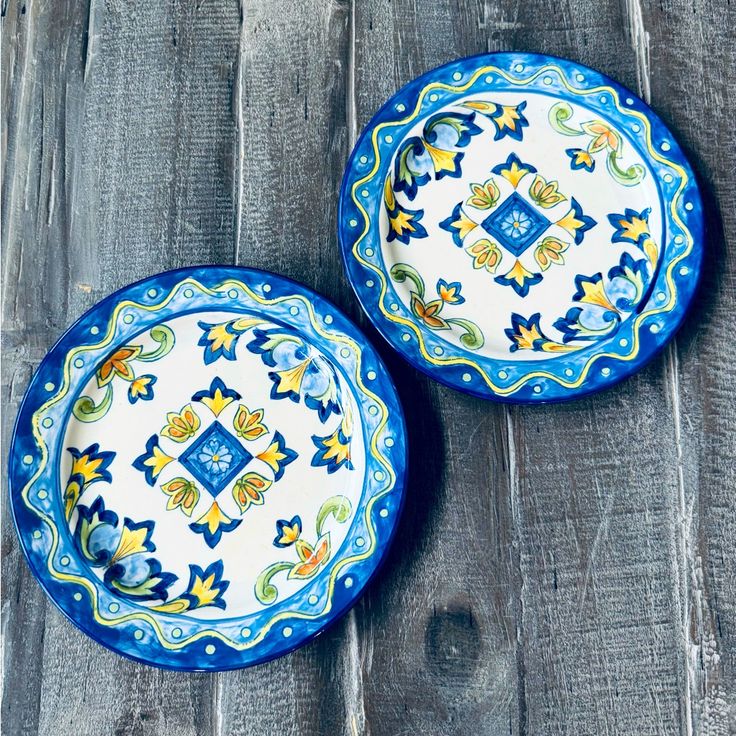When it comes to culinary mastery, the tools you use can make all the difference. Among the essential kitchen instruments, high carbon steel knives stand out for their sharpness and durability. Beginners and professional chefs alike seek to understand what makes these knives unique. If you’re considering investing in high carbon steel kitchen knives, this guide delineates crucial aspects to consider, ensuring you make the most informed decision.

Understanding High Carbon Steel: A Culinary Marvel
High carbon steel is, at its core, a type of steel that contains a higher percentage of carbon compared to standard stainless steel. This distinctive composition enhances hardness, enabling the blade to achieve a finer edge and maintain sharpness for longer durations. As a result, kitchen knives made from high carbon steel can slice through ingredients with remarkable precision, making meal preparation smoother and more efficient.
Furthermore, the hardness of high carbon steel contributes to its edge retention. Unlike softer steels that dull more rapidly and require frequent sharpening, well-crafted high carbon steel knives retain their sharpness even under heavy use. For avid home cooks and professionals who pride themselves on their knife skills, the advantage of a durable, sharp edge cannot be overstated. However, it’s essential to recognize that this high level of hardness may come with some degree of brittleness, meaning that the knife could chip if misused.
Another aspect to consider is the ease of sharpening. High carbon steel responds exceptionally well to sharpening techniques, allowing you to hone the blade back to an acute edge swiftly. This capability is particularly valuable for those who prefer to sharpen their knives at home. Understanding the properties of high carbon steel helps you appreciate its role in knife performance, making it an attractive option for serious cooks.
Key Features to Look for in High Carbon Steel Kitchen Knives
When navigating the plethora of high carbon steel knives available on the market, focus on several key features that distinguish superior products from the rest. First, assess the blade’s hardness, which is typically measured on the Rockwell scale (HRC). Ideal knives made from high carbon steel often fall between 58 to 65 HRC, striking a balance between hardness and toughness. Knives within this range retain a sharp edge while still resisting chipping under condition of regular use.
The construction method is another crucial factor. Look for knives forged from a single piece of high carbon steel, as opposed to those that are stamped out of a sheet. Forged knives tend to have better balance and durability, as the manufacturing process allows for the gradual shaping and tempering of the steel, resulting in a more robust blade. This process often leads to a fuller tang—where the blade extends into the handle—providing added strength and stability.
Additionally, consider the blade geometry, which influences cutting performance. A knife with a well-defined edge geometry, such as a convex or tapered grind, will excel in specific tasks like slicing or dicing. The thickness of the blade also matters; thinner blades work better for precision tasks, while thicker ones are suited for heavier cuts. Understanding these features enhances your ability to choose a knife that aligns with your culinary needs.

The Importance of Handle Material
While the blade is undoubtedly crucial, the handle of a high carbon steel kitchen knife is equally important. A well-designed handle improves comfort, control, and safety during use. When choosing your knife, investigate the materials used for the handle. Common options include wood, synthetic materials, and stainless steel. Each of these materials offers distinct advantages and drawbacks.
Wooden handles provide a timeless aesthetic and often feel warmer and more comfortable in the hand. However, they demand extra care to maintain their integrity, as exposure to moisture can lead to warping or cracking. On the other hand, synthetic handles crafted from materials like polypropylene or fiberglass-reinforced plastics tend to be more resistant to wear and moisture, making them a practical choice for busy kitchens. Stainless steel handles are incredibly durable and can offer a modern, sleek appearance, but they may become slippery when wet, posing a potential safety concern.
Moreover, consider the ergonomic design of the handle. A well-shaped handle that fits comfortably in your palm enhances control and minimizes fatigue. Some knives feature additional grips or contours to improve handling, which is especially beneficial during extended use. Each culinary task requires a different level of precision and strength, making the right handle design essential for a pleasurable cooking experience.
Maintenance and Care for High Carbon Steel Knives
Investing in high carbon steel kitchen knives is a decision that brings an exceptional edge to your kitchen. However, maintaining these knives calls for a commitment to care. High carbon steel knives are prone to rust and tarnish if not maintained correctly, unlike their stainless steel counterparts. Therefore, it’s paramount to establish a consistent maintenance routine that protects your investment while ensuring optimal performance.
To ensure longevity, always hand wash high carbon steel knives after use. Avoid placing them in the dishwasher, as prolonged exposure to moisture and heat can cause the steel to corrode. Use warm, soapy water and a soft sponge to clean the knife, then dry it immediately with a soft cloth. Regularly oiling the blade with food-safe mineral oil can help create a protective barrier against moisture and oxidation.
Sharpening is another fundamental aspect of knife maintenance. While high carbon steel knives maintain their edge longer than many alternatives, they still require regular sharpening. Employing a whetstone or other sharpening tools allows you to achieve an ideal edge angle. Generally, aim to sharpen the knife every few weeks, depending on usage frequency. Keeping the blade sharp not only enhances performance but also allows for safer cutting, as dull knives require more force—leading to potential accidents.

Slicing through Myths: High Carbon Steel vs. Stainless Steel
When considering a kitchen knife, many home cooks and culinary professionals grapple with the dilemma of high carbon steel versus stainless steel. Both types of knives have passionate proponents, each extolling their own virtues. Understanding the differences can help clarify which option better suits your culinary style.
High carbon steel knives excel in sharpness, edge retention, and ease of sharpening. They allow for clean, smooth cuts that elevate the presentation and quality of food. Conversely, stainless steel knives offer resistance to rust and corrosion, requiring less maintenance while delivering adequate performance for everyday culinary tasks. Stainless steel knives may not match the sharpness or edge retention of high carbon steel knives. However, they excel in conditions where moisture exposure is unavoidable.
Additionally, high carbon steel can develop a patina over time, showcasing a visual history of its use and culinary adventures. While some chefs appreciate this aesthetic, others may prefer the sleek and polished appearance of stainless steel. To make an informed choice, consider your cooking habits, maintenance commitment, and personal preferences, as these factors can significantly influence your culinary experience.

Best Brands to Consider for High Carbon Steel Kitchen Knives
With a growing interest in high carbon steel kitchen knives, numerous manufacturers have emerged, each promising quality and performance. However, only a select few brands consistently deliver top-tier products that live up to their claims. When searching for the perfect high carbon steel knife, focus on reputable brands with a history of excellence.
One such brand is Wüsthof, a German manufacturer renowned for its precision-crafted knives. Their use of high-quality high carbon steel and expert forging techniques ensures durability and exceptional performance. Another outstanding option is Shun, a Japanese knife maker known for blending traditional craftsmanship with modern technology. Shun’s knives often feature unique Damascus patterns, enhancing both aesthetic appeal and cutting ability.
Consider also brands like Victorinox, which offers high-quality, affordable options suitable for both beginners and professionals. Their high carbon steel knives provide excellent performance without breaking the bank. Misono and Global are other notable names worth exploring, known for their high-performance products and expert craftsmanship.
Before buying, research different brands and read customer reviews. If possible, test the knives in person to feel their quality. Knowing the brand’s reputation helps you make a wise choice. User experiences can guide you to a knife that meets your needs.

Making Your Final Decision
Choosing a high carbon steel kitchen knife is more than just a purchase; it’s an investment in your culinary journey. As you navigate the options, keep in mind the essential features discussed, including blade hardness, construction method, handle material, and maintenance. Consider your specific cooking style, preferences, and the tasks you frequently undertake.
Carefully consider these factors as you choose your knife. A high carbon steel knife will enhance your cooking skills. It will also become a cherished tool in your kitchen. With the right knife, you can explore your culinary creativity and enjoy a more fulfilling cooking experience.
In conclusion, high carbon steel kitchen knives blend tradition with performance, offering unparalleled sharpness and durability. Invest your time in understanding the intricacies of these knives, and you’ll cultivate a knife collection that serves you well for years to come. Happy cooking!
